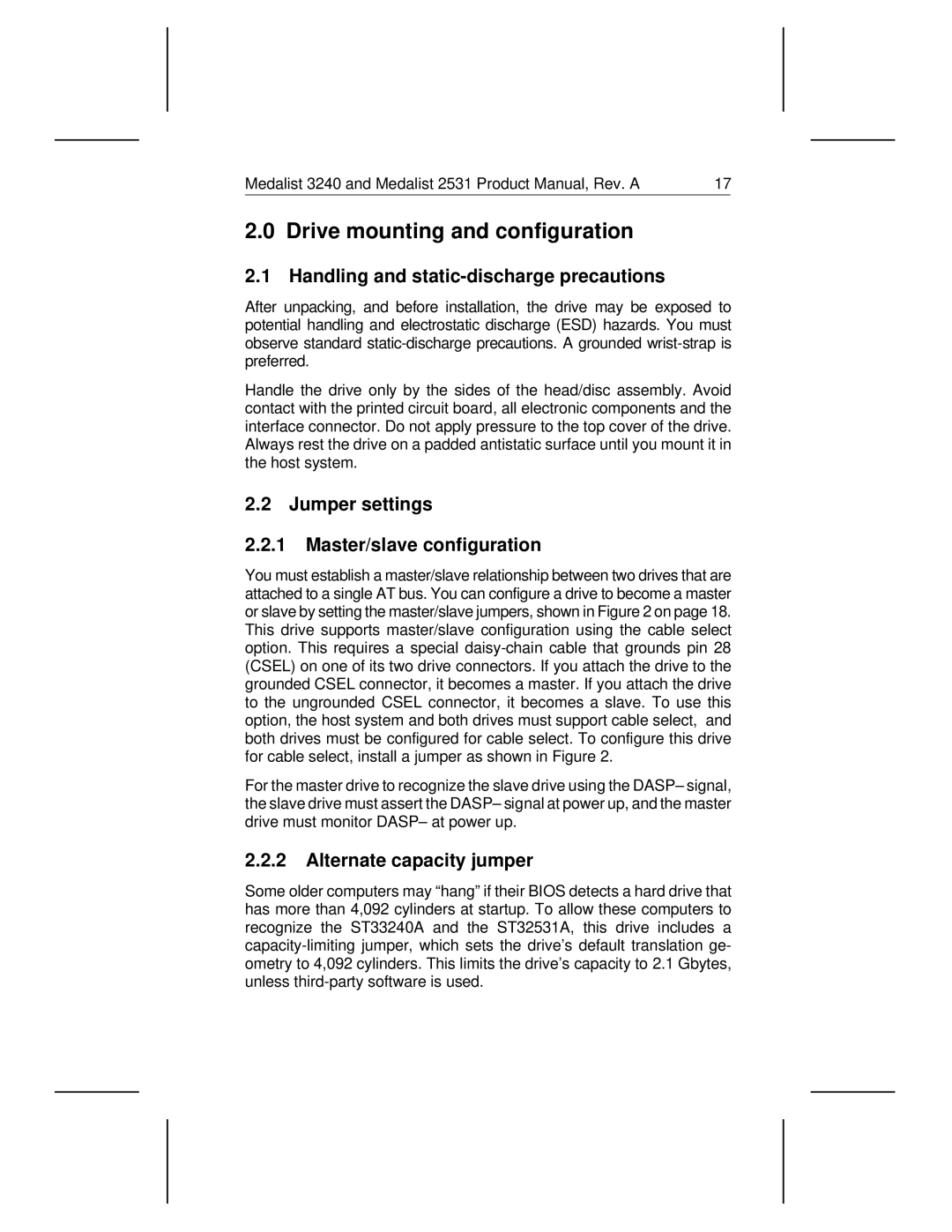3240, 2531 specifications
Seagate has long been a leader in the data storage industry, known for delivering high-performance hard drives and innovative solutions. Among their impressive lineup, the Seagate 2531 and 3240 models stand out for their robust features and advanced technologies, catering to both consumer and enterprise needs.The Seagate 2531 model offers a blend of reliability and speed, making it ideal for gamers and creative professionals alike. It boasts a storage capacity of up to 2TB, ensuring ample space for high-resolution files and games. Utilizing SATA III interface technology, the 2531 delivers rapid data transfer rates, enhancing the overall user experience. Its 7200 RPM spindle speed is designed for fast access times, allowing users to retrieve and save data swiftly. Additionally, the 2531 incorporates Seagate’s Advanced Power Management feature, which optimizes the power consumption of the drive, extending its lifespan and reducing energy costs.
On the other hand, the Seagate 3240 model takes performance a notch higher, providing a storage capacity of up to 5TB. This model is particularly suited for data-intensive applications such as video editing and large-scale backups. The 3240 uses a hybrid SSD-HDD architecture, which combines the speed of solid-state drives with the storage capability of traditional hard drives. This results in lower latency and improved overall performance, making it an excellent choice for professionals who demand efficiency in their workflow.
Both models come equipped with Seagate's Smart Align technology, a feature that enhances drive efficiency by optimizing data placement on the disk. This leads to improved performance while also extending the longevity of the storage device. Furthermore, both the 2531 and 3240 support Seagate’s SeaTools software, which allows users to monitor the health and performance of their drives, ensuring that their data remains secure.
The durability of these drives is another essential characteristic, as they are built to withstand the rigors of daily use. Seagate's proprietary technologies, such as Shock Guard and SecureErase, provide added protection and peace of mind. With a focus on providing cutting-edge technology and reliability, the Seagate 2531 and 3240 models serve as exemplary storage solutions, catering to diverse storage needs and ensuring that users can store, access, and safeguard their data with confidence.

